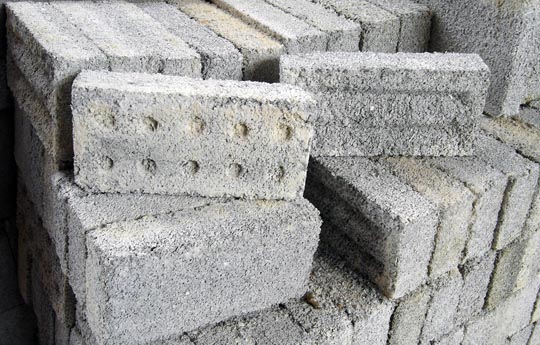AGRARIAN, ENGINEERING AND MATERIAL SCIENCES
Disposable bottles for sustainable houses
Researchers at the CONICET create bricks from plastic waste.
Returnable bottles are some of the most common waste that accumulates in cities and this situation is even worse if we consider the fact that it takes them 500 years to degrade, and that time increases if they are buried.
In response to this problem, Rosana Gaggino, CONICET associate researcher at the Centro Experimental de la Vivienda Económica (CEVE, CONICET-AVE) [Experimental Centre for the Economical Housing], and her team developed a process for the use of recycled plastics in construction, in this case, polyethylene terephthalate (PET) bricks.
“We use PET from bottle disposable containers and Portland cement as a binder, plus a chemical additive that improves the adhesion to the plastic particles of the cement”, the researcher explains.
Gaggino explains that the process involves first grinding plastic with a mill. Then a mixture is made with the Portland cement and the additive in a cement mixture. After that, the blend is put in a brick making machine where the brick are shaped. For Jerónimo Kreiker, CONICET assistant researcher at the same centre, “the process is simple because it is like producing cement and sand bricks, but the sand is replaced by PET plastic particles”.
These bricks have several technical advantages, and one of them is that they are five times more insulating than the conventional; besides they are lighter. “One PET brick weights 1,400 kg, whereas the brick made out of soil is one kilogram heavier”, Gaggino describes.
Furthermore, the researcher adds that the foundations of a house built with these bricks are smaller than the traditional ones because these houses are usually lighter; and what is more, since they have insulating material, they can have thinner walls. “We can have 15 cm walls, instead of 30”, the scientist explains.
The studies indicate that the PET and cement bricks have good fire resistance due to the fact the results of the Flame Propagation Test classified these bricks as RE 2 Class: combustible material with low flame propagation characteristics.
Currently, these construction components are used for enclosures and without a structural aim. For this reason, they are working on the modification of the PET surface. Their objective is to increase its compatibility with the cement by adding chemical products or by changing the production process and enhance the mechanical properties of the components.
Gaggino explains that one PET brick is produced from 20 disposable bottles, what highlights the environmental importance of the project because it can be an alternative to replace the clay bricks that consume fertile soil, forest firewood, and produce air pollution.
These bricks hold a national patent obtained in 2008 and one Certificado de Aptitud Técnica [Certificate of Suitability] provided by the Subsecretaría de Vivienda y Desarrollo Urbano de la Nación [Undersecretaryship for Housing and Urban Development] in 2006.
